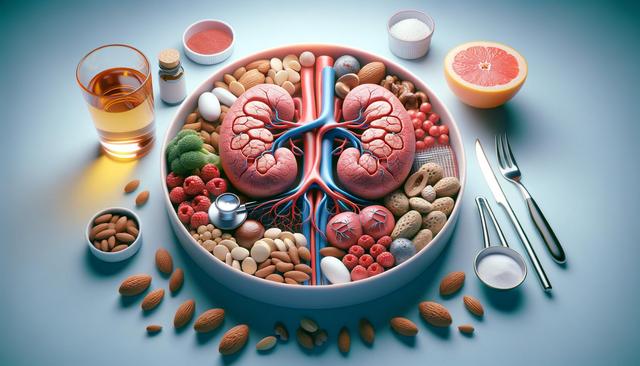What is Congenital Adrenal Hyperplasia?
Congenital Adrenal Hyperplasia (CAH) refers to a group of genetic conditions that impact the adrenal glands, which are responsible for producing hormones such as cortisol, aldosterone, and androgens. CAH is most commonly caused by a deficiency in the enzyme 21-hydroxylase, which plays a crucial role in hormone synthesis. When this enzyme is deficient or absent, the body is unable to produce adequate levels of cortisol and, in some cases, aldosterone. To compensate, the pituitary gland releases more adrenocorticotropic hormone (ACTH), which causes the adrenal glands to enlarge and overproduce androgens (male sex hormones).
The condition is typically inherited in an autosomal recessive manner, meaning a child must inherit two copies of the defective gene—one from each parent—to be affected. There are two main types of CAH: classic and non-classic. Classic CAH is more severe and usually diagnosed in infancy or early childhood, while non-classic CAH tends to be milder and may not be diagnosed until later in life.
Symptoms and Clinical Presentation
The symptoms of Congenital Adrenal Hyperplasia vary depending on the type and severity of the enzyme deficiency. In classic CAH, symptoms often appear soon after birth and may include:
- Salt-wasting, which can cause dehydration, vomiting, and low blood pressure
- Ambiguous genitalia in genetic females, due to excess androgens
- Rapid growth during childhood but short stature in adulthood
- Early signs of puberty or virilization
In non-classic CAH, the symptoms are generally milder and may include:
- Irregular menstrual periods
- Excessive facial or body hair (hirsutism)
- Severe acne
- Fertility issues
Because the symptoms can mimic those of other conditions, a thorough medical evaluation is necessary to arrive at an accurate diagnosis.
Diagnosis and Testing
Diagnosing Congenital Adrenal Hyperplasia typically involves a combination of clinical evaluation, family history, and laboratory testing. Newborn screening has become a widely adopted practice in many countries, enabling early detection of CAH. The primary diagnostic test measures 17-hydroxyprogesterone (17-OHP) levels in the blood, which are elevated in individuals with CAH.
Additional diagnostic tools may include:
- Electrolyte panels to assess sodium and potassium levels
- ACTH stimulation tests to evaluate adrenal function
- Genetic testing to identify mutations in the CYP21A2 gene
- Imaging studies such as ultrasound, especially in ambiguous genitalia cases
Early diagnosis is critical for effective management and to prevent life-threatening adrenal crises, particularly in the salt-wasting form of classic CAH.
Treatment and Management Strategies
Although there is no cure for CAH, effective treatment options are available to help manage the condition. The main goal of treatment is to replace deficient hormones and suppress the overproduction of androgens. Standard therapies include:
- Glucocorticoids (such as hydrocortisone) to replace cortisol
- Mineralocorticoids (such as fludrocortisone) to replace aldosterone in salt-wasting forms
- Sodium supplements for infants with salt-wasting CAH
Regular monitoring and dose adjustments are essential to ensure proper growth, development, and hormone balance. Some individuals may also require surgical intervention to correct genital abnormalities or fertility treatments later in life. Lifelong follow-up with a multidisciplinary team, including endocrinologists, is typically necessary to manage the condition effectively.
In addition to medical treatment, psychological support can be beneficial, especially for individuals dealing with gender identity issues or social challenges related to the condition.
Living with CAH: Challenges and Support
Living with Congenital Adrenal Hyperplasia can present various challenges, both physical and emotional. Families and individuals affected by CAH often face complex decisions about treatment, reproductive health, and quality of life. However, with proper medical care and support systems, many people with CAH can lead healthy and fulfilling lives.
Key considerations for long-term management include:
- Adherence to medication schedules to avoid adrenal crises
- Regular endocrinology visits for hormone level monitoring
- Education on stress dosing during illness or surgery
- Psychosocial support to address emotional well-being
Support groups and advocacy organizations can provide valuable resources and connect families with others facing similar experiences. Education is also crucial—both for patients and for those around them—to ensure understanding and reduce stigma associated with the condition.
Conclusion
Congenital Adrenal Hyperplasia is a complex yet manageable condition that impacts hormone production and can affect physical development and overall health. Early diagnosis, consistent medical care, and emotional support play a vital role in improving outcomes. While CAH requires lifelong attention, individuals with this condition can thrive with the right strategies and a supportive care network. For families and individuals navigating CAH, staying informed and connected to healthcare providers is essential for long-term well-being.


